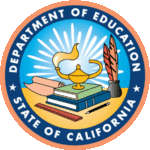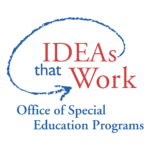This guide, prepared under the direction of the Special Education Division of the California Department of Education (CDE), provides educators with policy and practice for most appropriately and effectively supporting the educational advancement of student with disabilities who are also English learners.
California Department of Education. 2019. California Practitioners’ Guide for Educating English Learners with Disabilities. Sacramento, CA: California Department of Education.
This three-part report demonstrates that a large subgroup of students with disabilities are not getting their needs met; describes the school experiences of these students in relation to exclusionary discipline, referral to law enforcement, and chronic absenteeism; and indicates how the pandemic is exacerbating pre-existing inequitable conditions. The report concludes with recommendations for federal policymakers.
Losen, D. J., Martinez, P., & Shin, G.H.R. 2021. Disabling Inequity: The Urgent Need for Race-Conscious Resource Remedies. The Center for Civil Rights Remedies at the Civil Rights Project, UCLA: Los Angeles, CA. https://www.civilrightsproject.ucla.edu/research/k-12-education/special-education/disabling-inequity-the-urgent-need-for-race-conscious-resource-remedies
This report focuses on learning experiences in the early years, both through age five and the early grades (K-5). Three key policy areas are identified that strongly influence children's experiences in the classroom: 1. Harsh discipline and its disproportionate application 2. Segregation of children with disabilities in learning settings 3. Inequitable access to bilingual learning opportunities for dual language and English Learners. The report includes learnings and recommendations from their research. Report includes three chapters totaling 140 pages.
Children's Equity Project and the Bipartisan Policy Center. From the Early Years to the Early Grades. Children's Equity Project and the Bipartisan Policy Center.
This is a padlet with resources developed by the Imperial County SELPA and curated from existing resources to support and improve outcomes for English Learners with Disabilities. The padlet includes: 1. Resources developed as part of SELPA Content Leads in the California Statewide System of Support. 2. California Practitioners Guide for Educating English Learners with Disabilities and PowerPoint presentation 3. ELD Standards 4. Unpacking ELPAC Task Types and Additional ELPAC Resources 5. Accessibility Resource Graphics 6. Alternate ELPAC 7. Serving the needs of ELs with Disabilities 8. Blueprints for Effective Leadership and Instruction for our English Learners' Future (B.E.L.I.E.F.) modules.
Imperial County SELPA. 2021. Improving Outcomes for English Learners with Disabilities. Imperial County SELPA.
https://padlet.com/dmontoya18/ImprovingOutcomesELsSWD
This letter from Secretary Cardona highlights key resources and information about resources from the Department that may be useful in supporting the needs of students with disabilities in particular, including tools for schools to assist students in addressing any disability-based behaviors that could otherwise interfere with their or other students' learning, or that could lead to student discipline or impact safety
Miguel A. Cardona. 2022. Letter from the United States Secretary of Education, dated July 19, 2022. https://www2.ed.gov/policy/gen/guid/secletter/220719.html (accessed September 16, 2022).
This national study provides a comprehensive analysis of the instructional days lost due to out-of-school suspensions in 2015-16 for middle and high school students The study demonstrates how the frequent use of suspensions contributes to stark inequities in the opportunity to learn. This study will help you understand the impact on every social group and students with disabilities.
Losen, D.J., Martinez, P. 2020. Lost Opportunities: How Disparate School Discipline Continues to Drive Differences in the Opportunity to Learn. Los Angeles, California: The Civil Rights Project.
https://www.civilrightsproject.ucla.edu/research/k-12-education/school-discipline/lost-opportunities-how-disparate-school-discipline-continues-to-drive-differences-in-the-opportunity-to-learn#:~:text=Info-,Lost%20Opportunities%3A%20How%20Disparate%20Schoo
The NCSI supports State Education Agencies (SEAs) assisting them to learn about and understand seminal research around policy development implementation to meet the needs of students with disabilities. NCSI assists SEAs to translate that research into practice. Particular attention is given to the systemic functions of data literacy, evidence-based practices, stakeholder engagement, and systems coherence, in order to help SEAs cultivate knowledge and skills that enable them to achieve lasting impact for students.
This document highlights national data regarding the percentage of time students with disabilities are educated with their typically developing peers. The data are disaggregated by placement, disability, race/ethnicity, and by state.
Office of Special Education Programs. 2022. OSEP Fast Facts: Educational Environments for School-Aged Children with Disabilities. https://sites.ed.gov/idea/osep-fast-facts-educational-environments-school-aged-children-disabilities/ (accessed September 16, 2022).
This document highlights national data regarding the number of students with disabilities that are receiving a free and appropriate public education (FAPE). The data are disaggregated by gender, location of education, English language proficiency, type of disability, disciplinary removals, and by state.
Office of Special Education Programs. 2022. OSEP Fast Facts: Educational Environments of Children with Disabilities, Ages 5 (in kindergarten) through 21, Served under IDEA Part B https://sites.ed.gov/idea/osep-fast-facts-school-aged-children-5-21-served-under-idea-part-b-21/ (accessed September 16, 2022).
This fact sheet provides national data about demographics of English Learners (EL), including trend data and data disaggregated by disability, placement of EL students with disabilities, and high school completion.
Office of Special Education Programs. 2022. OSEP Fast Facts: Students With Disabilities Who Are English Learners (ELs) Served Under IDEA Part B
https://sites.ed.gov/idea/osep-fast-facts-students-with-disabilities-english-learners (accessed September 16, 2022).


